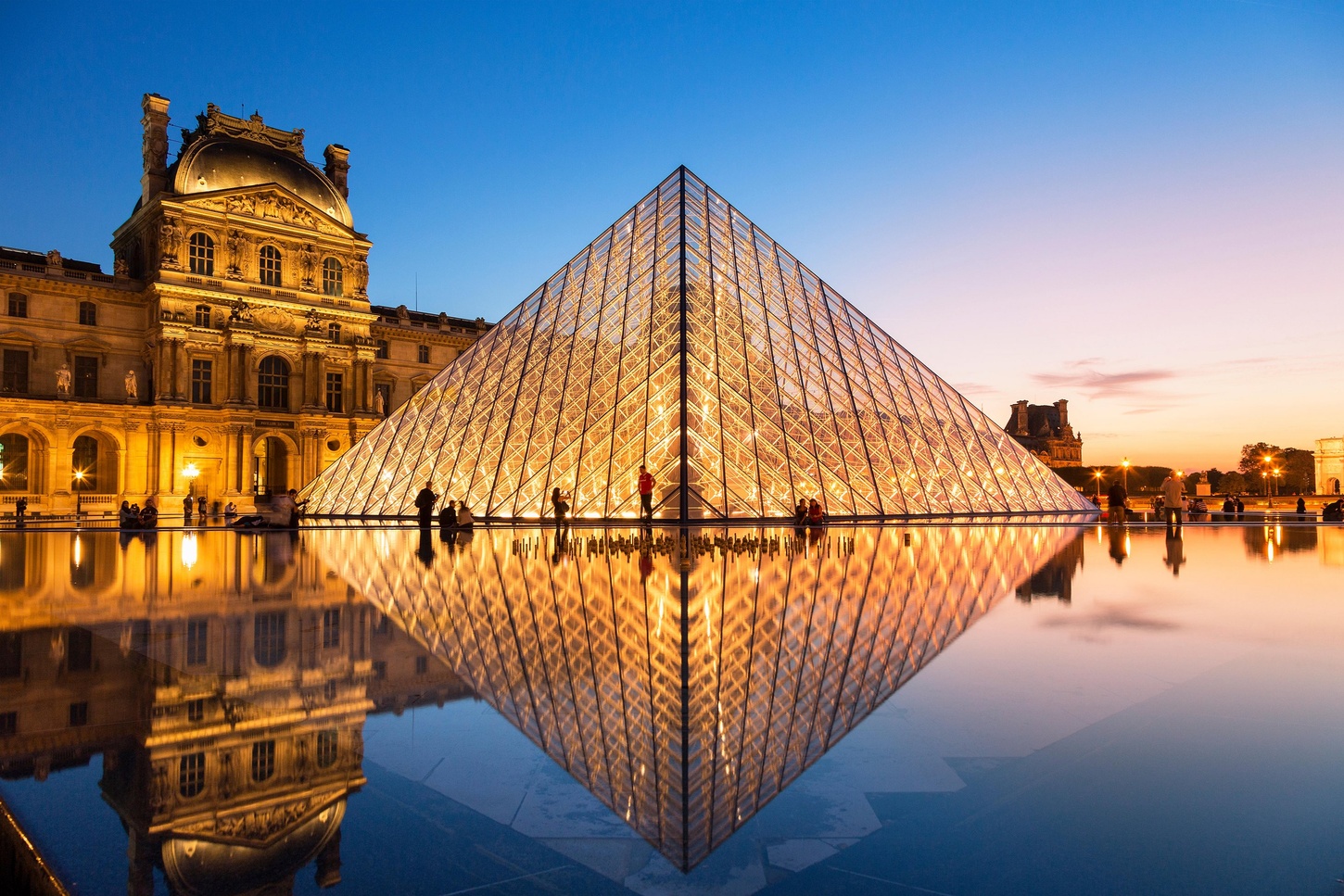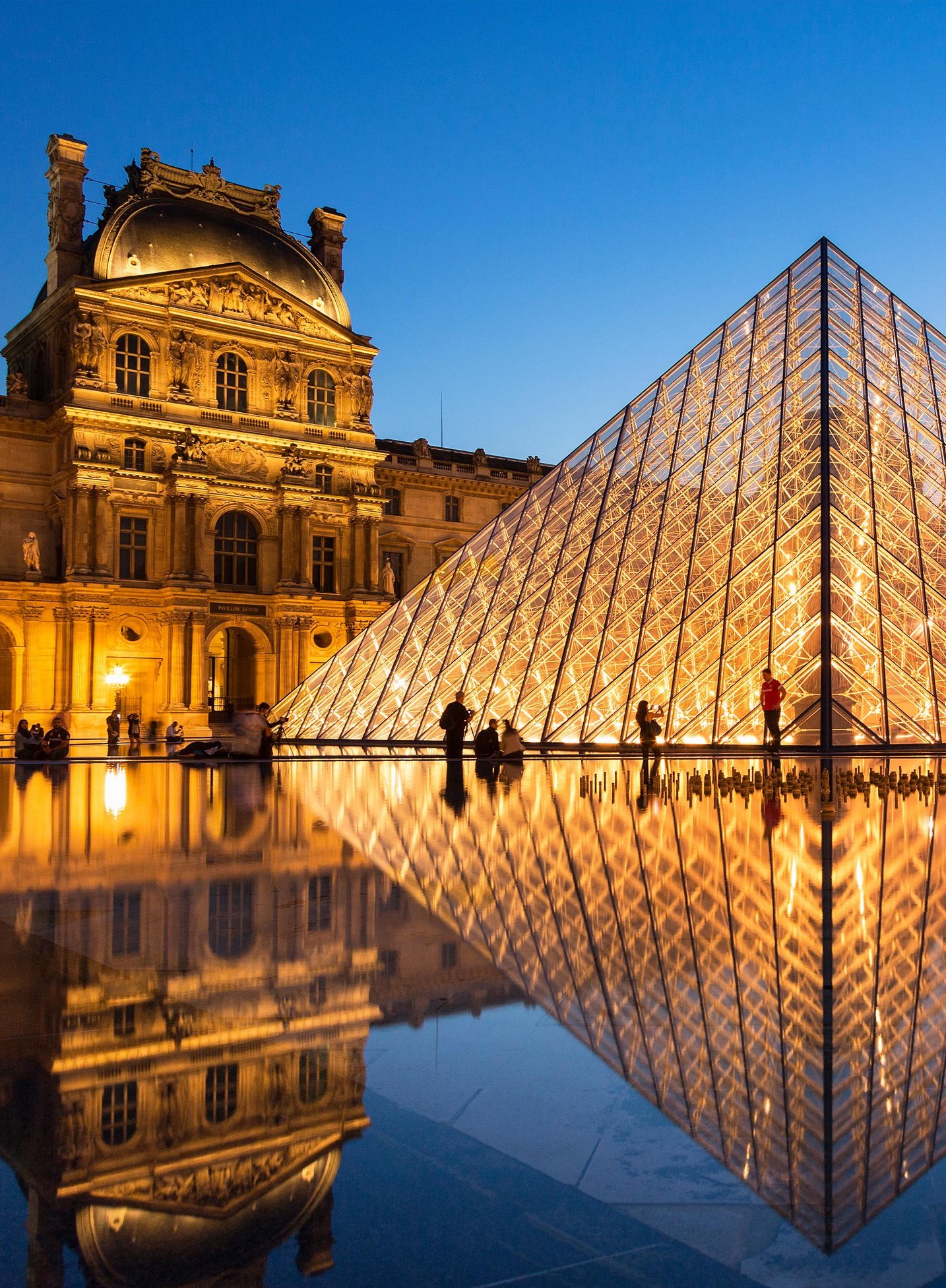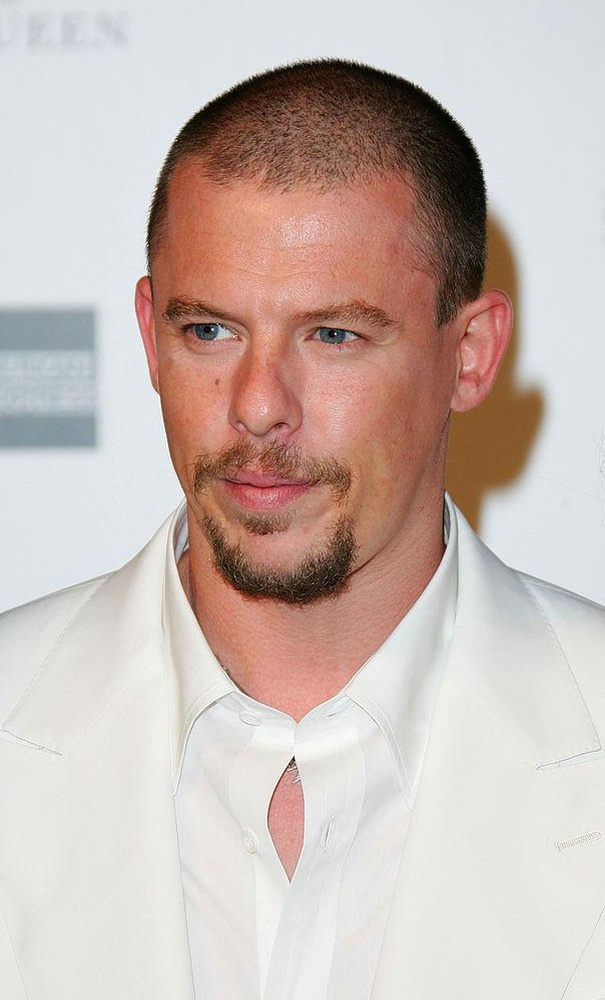FACELIFT ARTISTRY
INTRODUCTION
For over 20 years Rajiv has engaged in the parallel fields of art and psychology, allowing him to develop his passion for converting facelift surgery into artistry into confidence. The challenge of facelifting is to keep the face looking natural, looking untouched and still like You. For his uniquely artistic approach to tackling these issues, Rajiv was awarded a Guggenheim Professorship at the Louvre in Paris. The following is a summary of the lecture he delivered re-visiting the work of Leonardo da Vinci on natural beauty and applying it to facelift surgery. Also included is his collaboration with Lee Alexander McQueen entitled “Facelift Couture” – Keeping your face still looking like You.
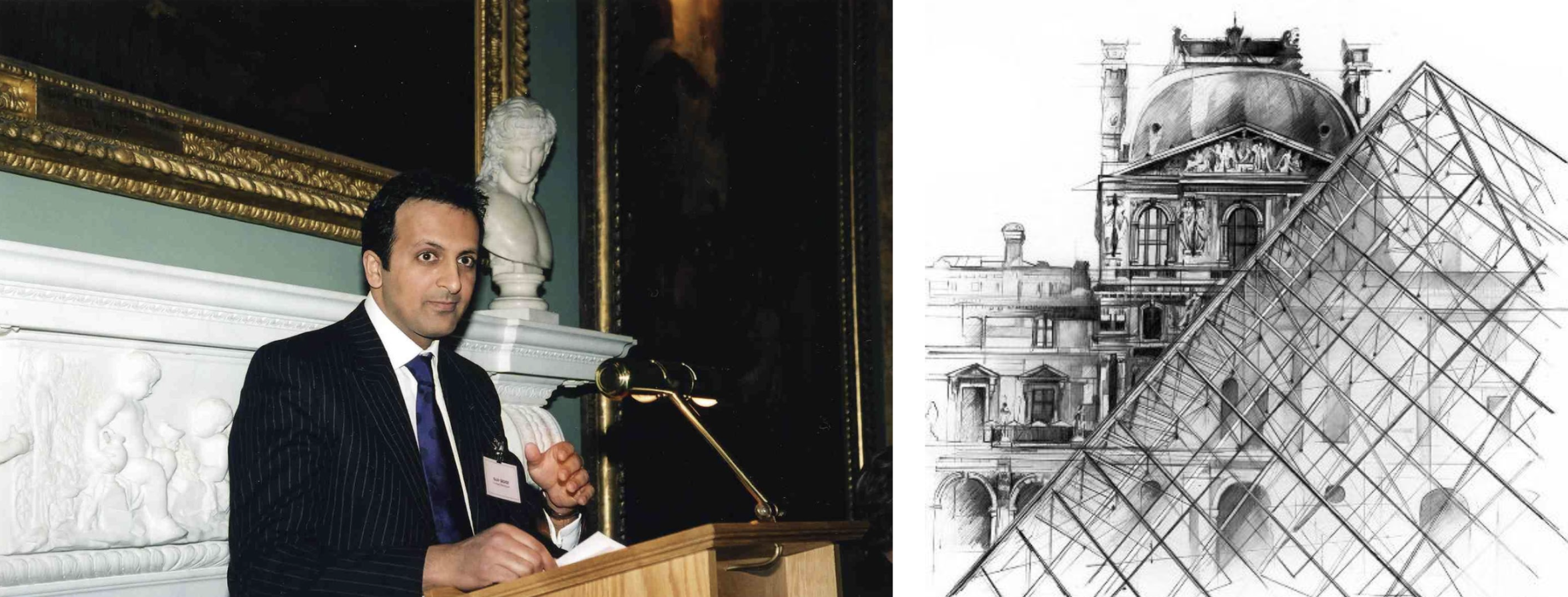
Rajiv Grover delivering the Guggenheim Lecture at the Louvre in Paris.
Contents:
Why are certain facial features so important?
The central facial triangle
conducted at New York’s Metropolitan Museum of Art using a camera to investigate where a person’s eyes first look when they see a face discovered that people look initially at the subject’s eyes, then down to the mouth and then back to the eyes before looking around the outline of the face. The central facial triangle, consisting of the two eyes and the mouth, is therefore a key feature of the face. Even very young children look at faces this way long before they have learnt about facial beauty or perception.
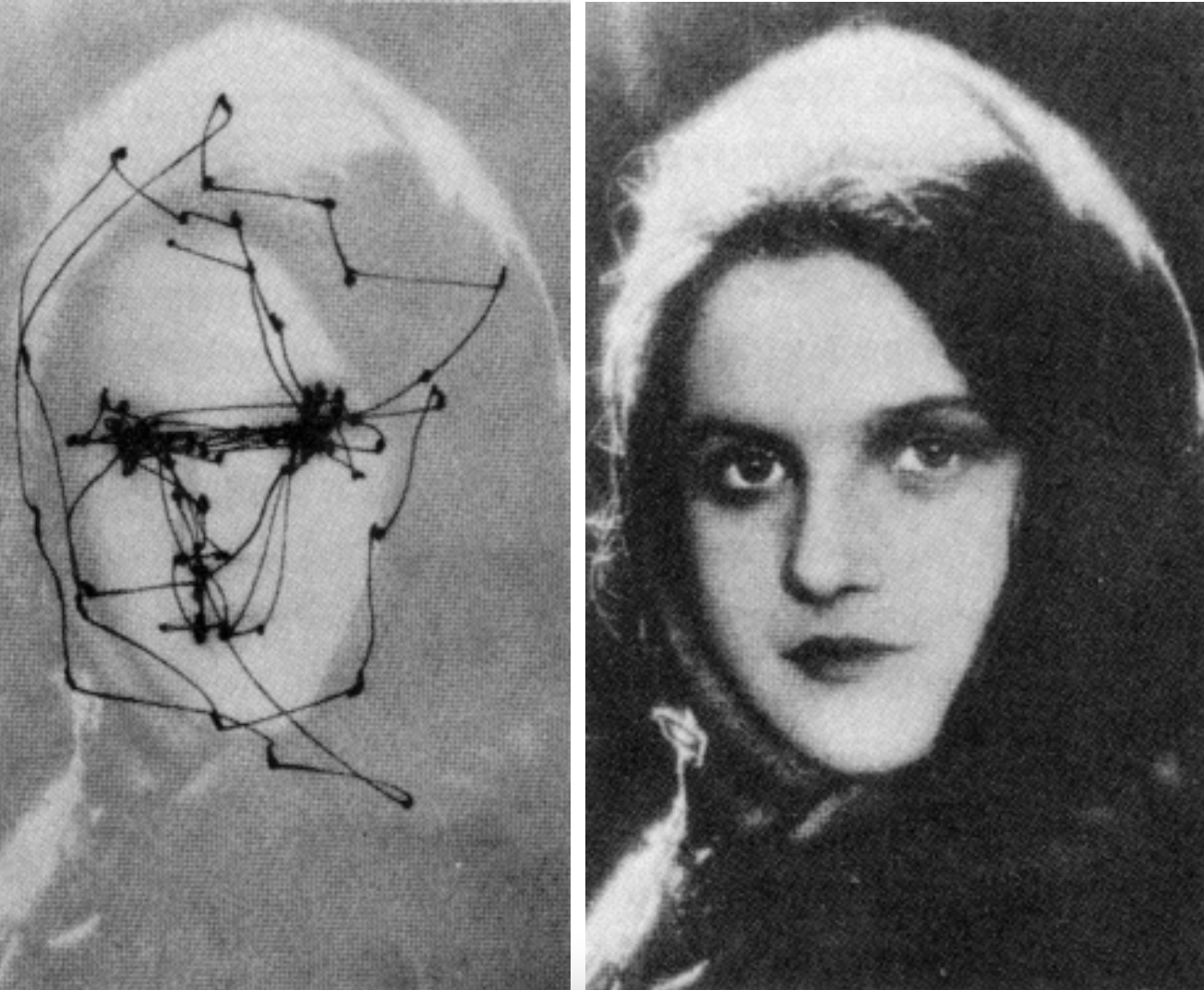
Artistic perception and the central facial triangle
The central facial triangle is the first area to draw the gaze of an observer. Andy Warhol used this to his advantage when creating flattering silk screen prints of his subjects. He emphasized the central facial triangle by creating prominence of the eyes and lips. Any feature which might distract from the central facial triangle such as the nose was minimised. This way he emphasized the youth and beauty of his subjects.

Silk screen prints by Andy Warhol
In the world of Photography, the Vogue cover which was voted the most iconic of the 20th century was the January 1950 cover photographed by Erwin Blumenfeld which distilled the face down to just the eye and mouth and yet we still see it as a face. This illustrates the powerful impact which the features of the central facial triangle have on perception.
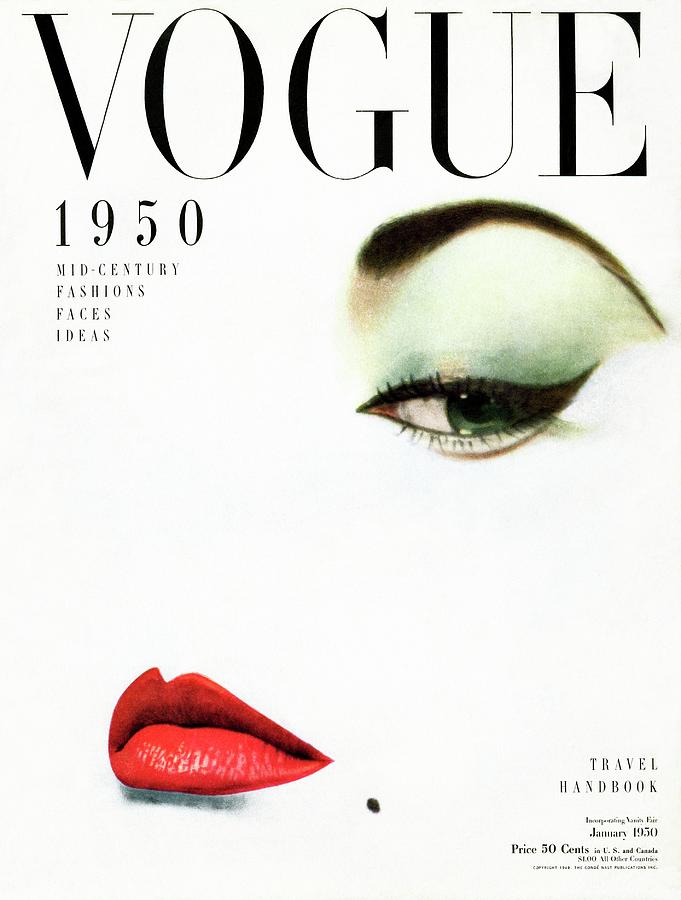
1950 Vogue cover by Erwin Blumenfeld
What features make a face beautiful?
The role of the central facial triangle
Understanding the central facial triangle allows us to look at beauty in an analytical way. A face where the central facial triangle is emphasized appears more attractive. Wide bright eyes and proportionate lips without features that could distract attention, such as a large nose, prominent nasolabial folds or jowls mean that one can focus on the key features of the central triangle. The example of Brigitte Bardot illustrates this well. The eyes stand out clear as does the mouth, so attention focuses on the central facial triangle. The fact that her central facial triangle is so clear makes her very beautiful.
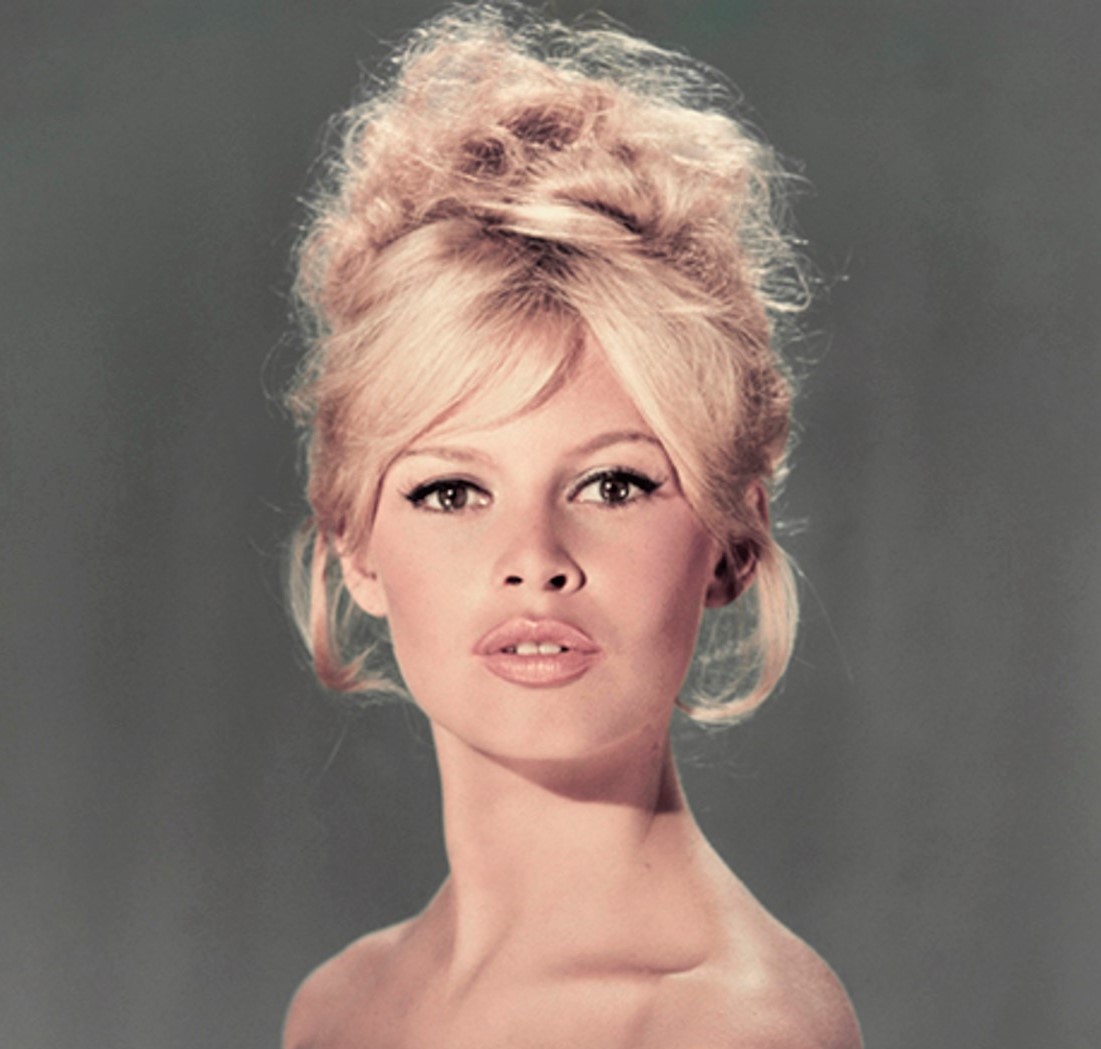
Brigitte Bardot age 25
Can anatomical features enhance the central facial triangle?
Although the eyes and lips themselves are the key areas of facial perception, they can be enhanced by other anatomical features. Both the eyebrows and the cheeks “frame” the eyes and the cheeks in particular act as a pedestal for the eyes. Enhancement of the cheek within the normal anatomical range therefore acts to enhance the appearance of the eyes which in turn improves our perception of the face. This interaction of the cheek with the central facial triangle was clearly understood by the great artists of the Italian Renaissance such as Sandro Botticelli. The majority of his works are housed at the Uffizi gallery in Florence including “Primavera” which announces the arrival of spring. Although the painting is famous for the inclusion of the three graces, the depiction of Primavera herself is a good example of how the cheek can act as a pedestal to enhance the eyes.
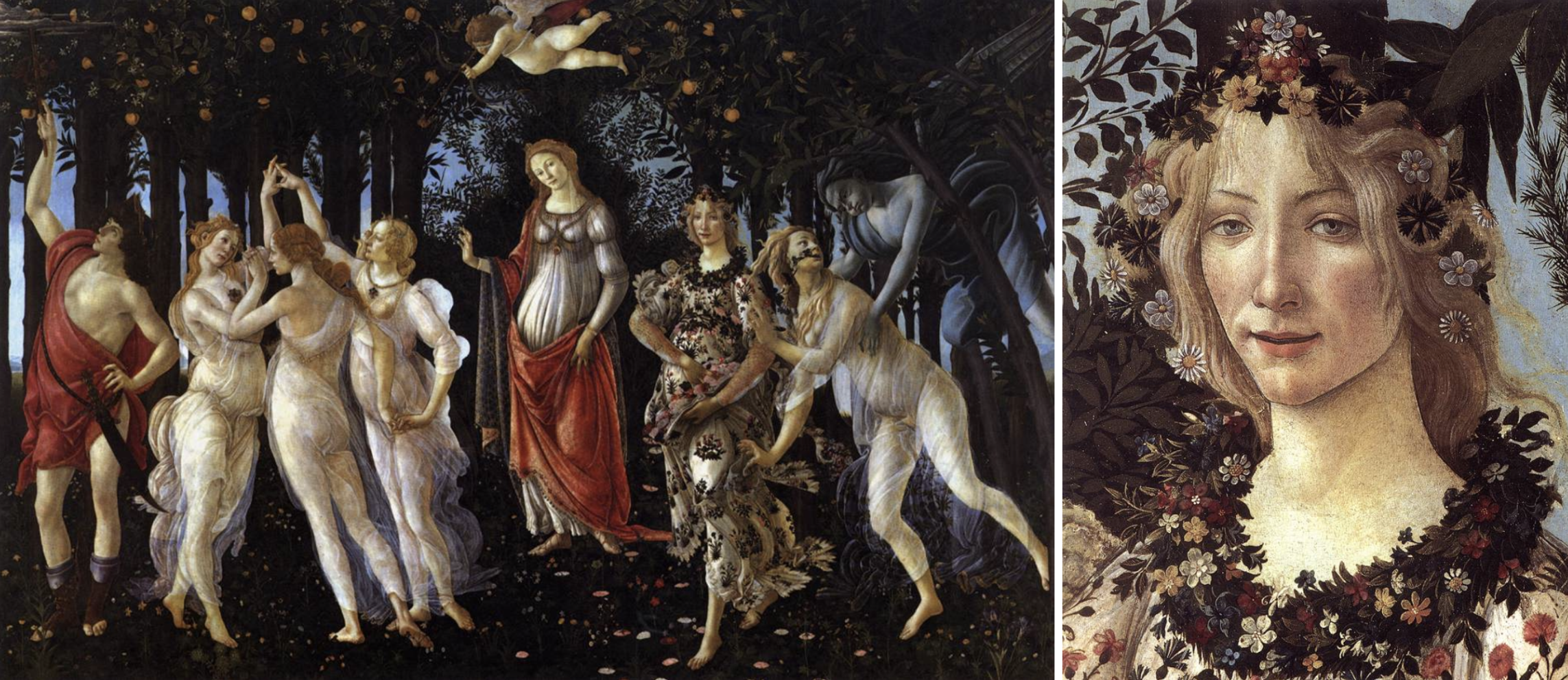
Primavera by Sandro Botticelli emphasizing how the cheek can enhance the eye
The shape of the midface and cheek relative to the lower face is a double curve referred to by architects as an “ogee”. This double curve which is convex over the cheek and then slightly concave towards the jawline enhances the appearance of the central facial triangle by providing a “pedestal for the eyes” whilst definition lower down creates a triangular shaped face overall.
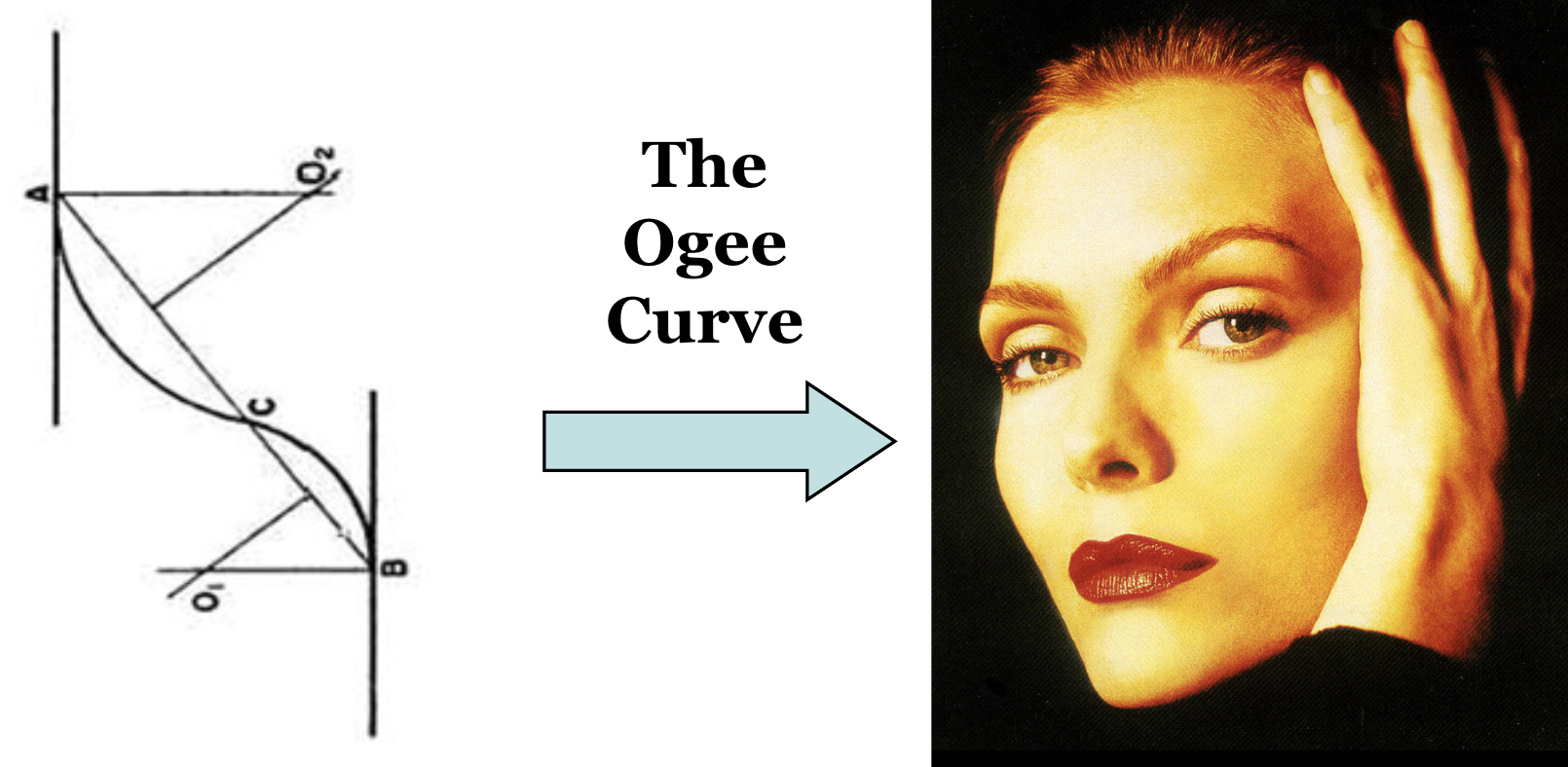
Left: Mathematical illustration of
“Ogee curve – convex above with concave below
Right: Mathematical illustration of
“Ogee curve – convex above with concave below
Illustration of face with ogee curve which enhances the central facial triangle by the cheek acting as a pedestal to emphasize the eye
How does the face age and how does this affect the Central Facial Triangle?
How does Ageing happen – Is it Volume Loss or Gravity?
To investigate what happens to facial anatomy as we age, Rajiv Grover collaborated with the QMed Institute in Sweden to study facial scans taken through life at different ages. Interestingly, before evidence of gravity, there is a gradual loss of volume from the face particularly over the upper cheeks starting around the age of 40. Approximately 7 years later, gravity moves even more volume away from the cheeks as it slides towards the nose to sit above the nasolabial fold (nose to mouth line) – a process called centrofacial ageing. This changes the outline of the face from heart shaped to more square (Published in the American Journal of Aesthetic Surgery). Because the cheeks act as the “pedestal for the eyes”, reducing cheek volume also reduces the prominence of the eyes within in the central facial triangle. This research revealed that alteration in face shape through volume loss and later by gravity, was a key change in facial ageing and by impacting on the central facial triangle it could negatively influence the appearance of both youth and beauty.
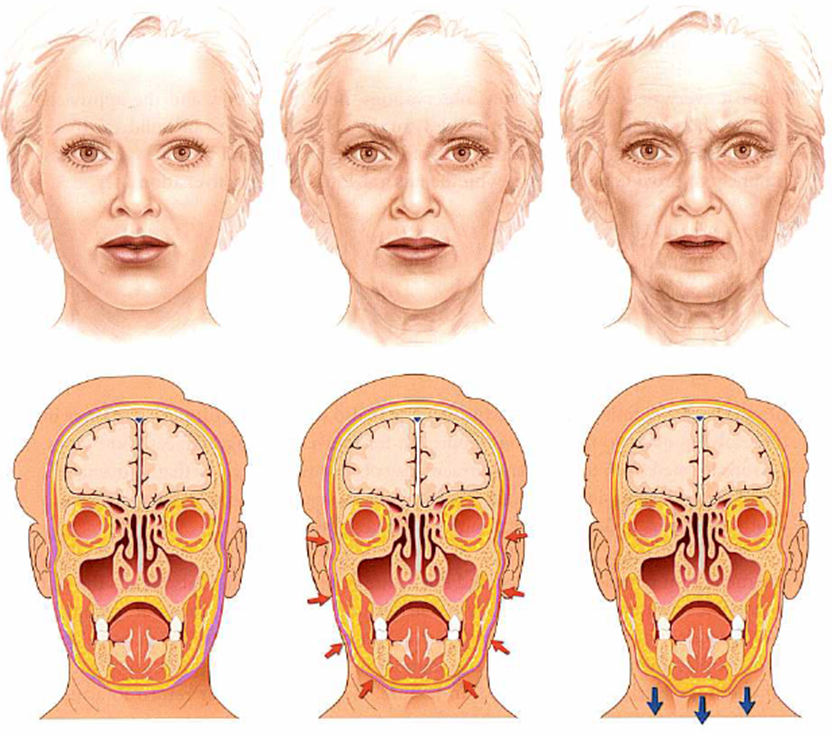
Volume loss occurring 7 years before effects of gravity in facial ageing
Is the concept of change in shape being the central factor of ageing something new?
Although the world of science may have thought this was a new discovery the world of art had known this for nearly 500 years. Rajiv had the exceptional privilege to study the original manuscripts of Leonardo da Vinci which revealed his thinking on natural beauty. In his teachings on how to draw the features of an older face Leonardo commented that the most important determinant of age was face shape and second was facial features like the nose to mouth lines and last of all was skin wrinkles.
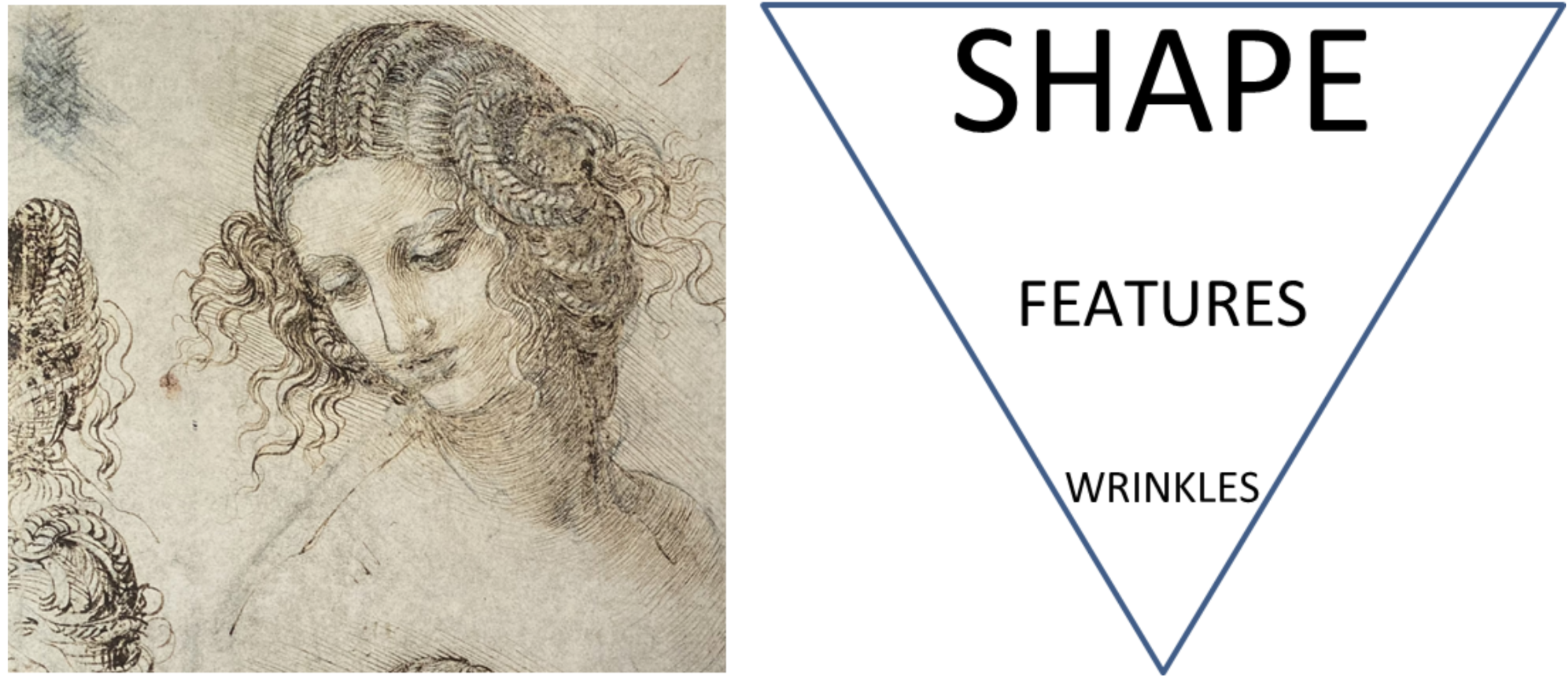
Leonardo da Vinci talked about shape being more important than facial features and wrinkles as signs of ageing nearly 500 years before its value was appreciated by science – His teachings on face shape are housed in The Louvre, Paris.
What happens to the Central Facial Triangle with age?
As the face ages the loss of midface volume reduces the prominence of the eyes. Later, the deepening of nose to mouth lines through gravity detracts attention from the mouth. The appearance of the central facial triangle therefore seems to reverse from a triangle that has apex down, into a triangle with apex upwards.
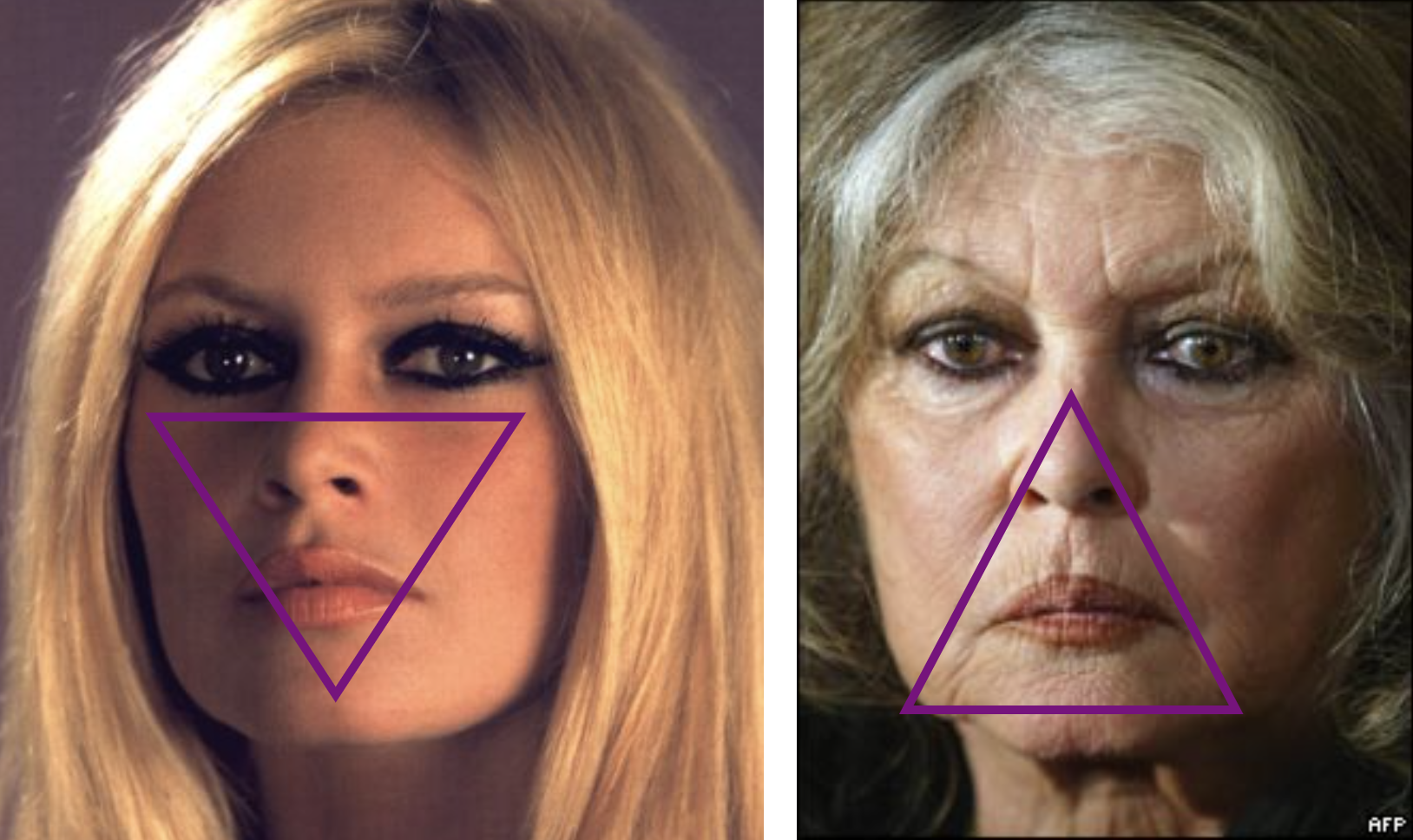
The signs of ageing seen in the “real face” of Brigitte Bardot age 25 and 62. Loss of midface volume and jowl formation reverses the perception of the central facial triangle.
The formula for the feminine eternal – Learning from Leonardo da Vinci.
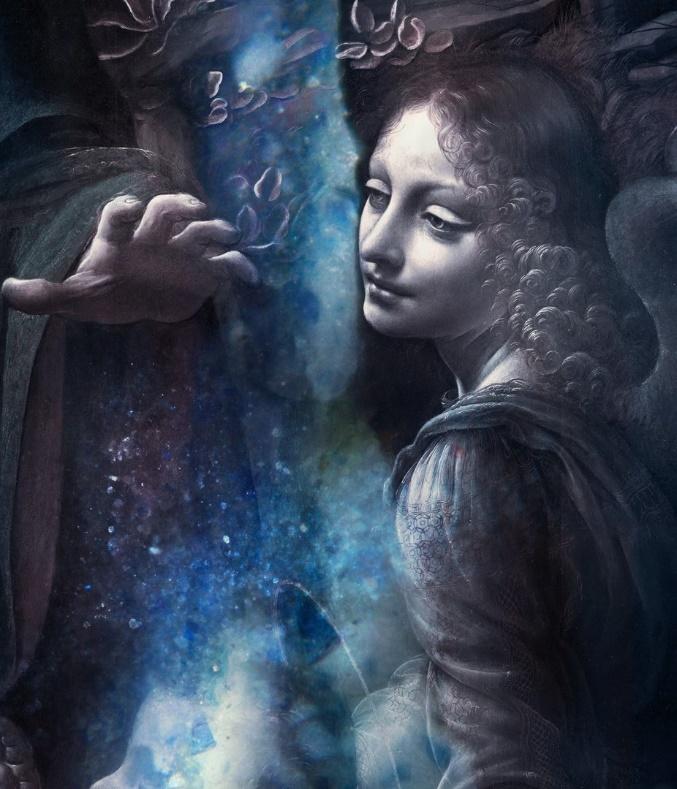
Leonardo da Vinci is arguably the greatest artist who ever lived. This accolade stems from his sublime ability to create images with immense natural beauty. Studying the original works of Leonardo, Rajiv discovered that the artist described natural beauty through the three virtues of youth, femininity, and elegance. He portrayed youthful beauty in the midface by Contour, feminine beauty in the lower face characterised by Definition, whilst a smooth Silhouette described elegant beauty in the jawline and neck. Interestingly, these three virtues synergize to enhance the central facial triangle by delivering a heart shaped facial outline which explains why contour, definition, and silhouette were described by Leonardo himself as “The formula for the feminine eternal”. The science of beauty based on how our brains are hard wired focusses attention on the central facial triangle but Leonardo’s work on facial shape explains the art behind the science.
Natural beauty = youth + femininity + elegance
Youth = Contour in the midface
Femininity = Definition in the lower face
Elegance = smooth Silhouette in the jawline and neck
Contour, Definition, Silhouette = The formula for the feminine eternal
Applying Leonardo’s formula means that all three virtues need to be addressed together in order to achieve natural beauty. Surgery which addresses these virtues in all three facial thirds (midface, lower face, jawline, and neck) creates a harmony which makes the face look younger but not looking as if it was ever touched. This is why to achieve natural looking surgery you have to operate on midface, lower face and jawline plus neck simultaneously, sometimes appearing to do more in order to make it look like less was done.
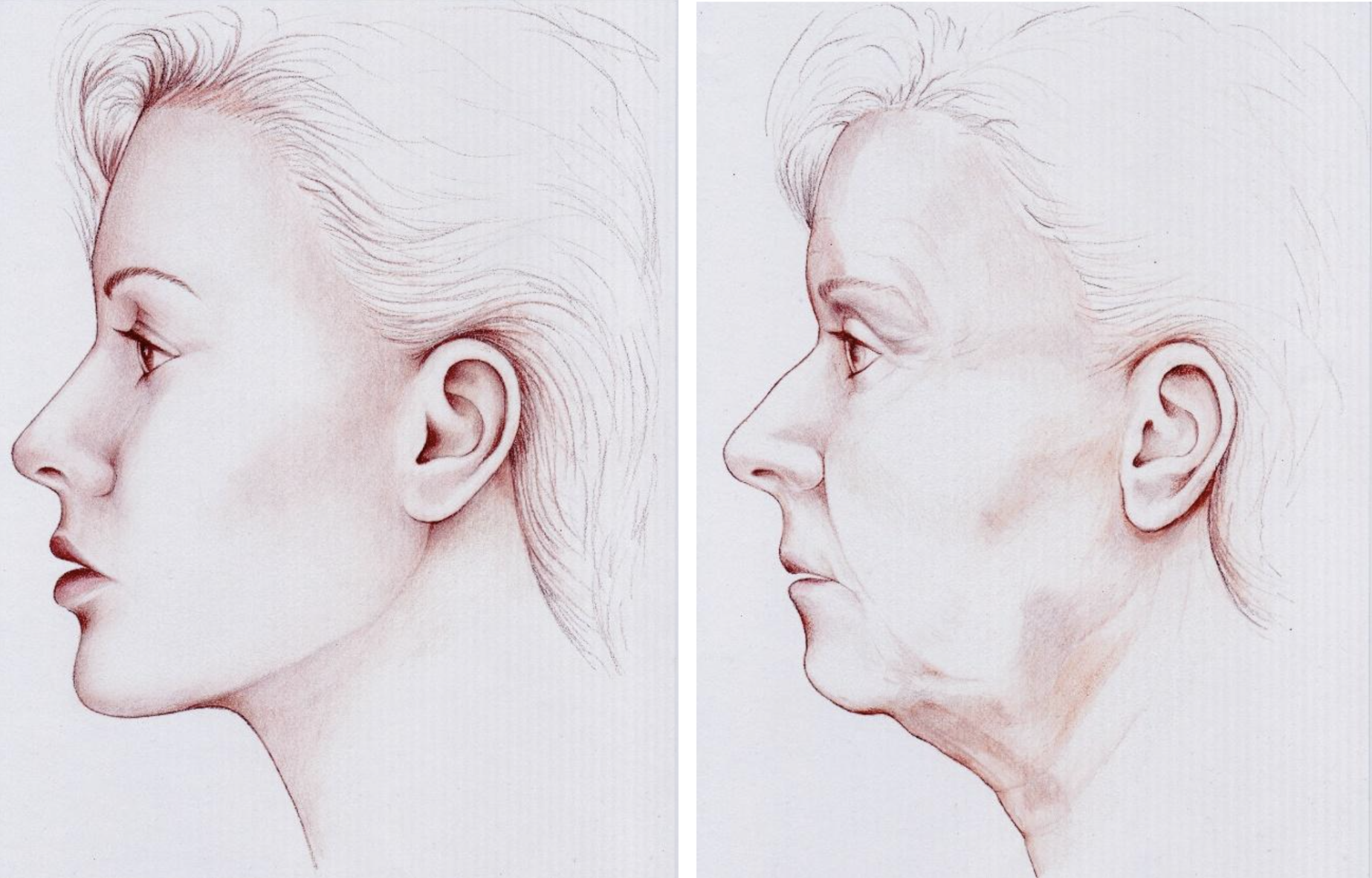
The “Virtual Face”. A research tool developed to study the science of ageing by Rajiv Grover in collaboration with the QMed Institute, Sweden.
How does Leonardo’s work help improve modern Facelifting?
The aim of facelifting is to rejuvenate and create natural beauty. The gravitational movement of soft tissue centrally from the cheek towards the nose reduces cheek volume, creates nose to mouth lines and lower in the face produces heaviness which is more masculine and less feminine. The overall effect is to change facial outline from heart shaped to square. Modern rejuvenation should therefore be led by the work of Leonardo da Vinci and aim to enhance contour in the midface, restore definition and femininity to the lower face whilst refining the silhouette of the jawline and neck to create elegance. This approach to rejuvenation aiming for natural beauty by addressing the three virtues of youth, femininity and elegance can only be achieved by changing shape which means moving facial soft tissue. It is in the soft tissue, not the skin, where volume lies so this needs to be repositioned and most importantly, without tension, so it looks natural not just at rest but with expression and emotion. Only if the face is rejuvenated by respecting the requirements of natural beauty can it look as if the face was never touched.
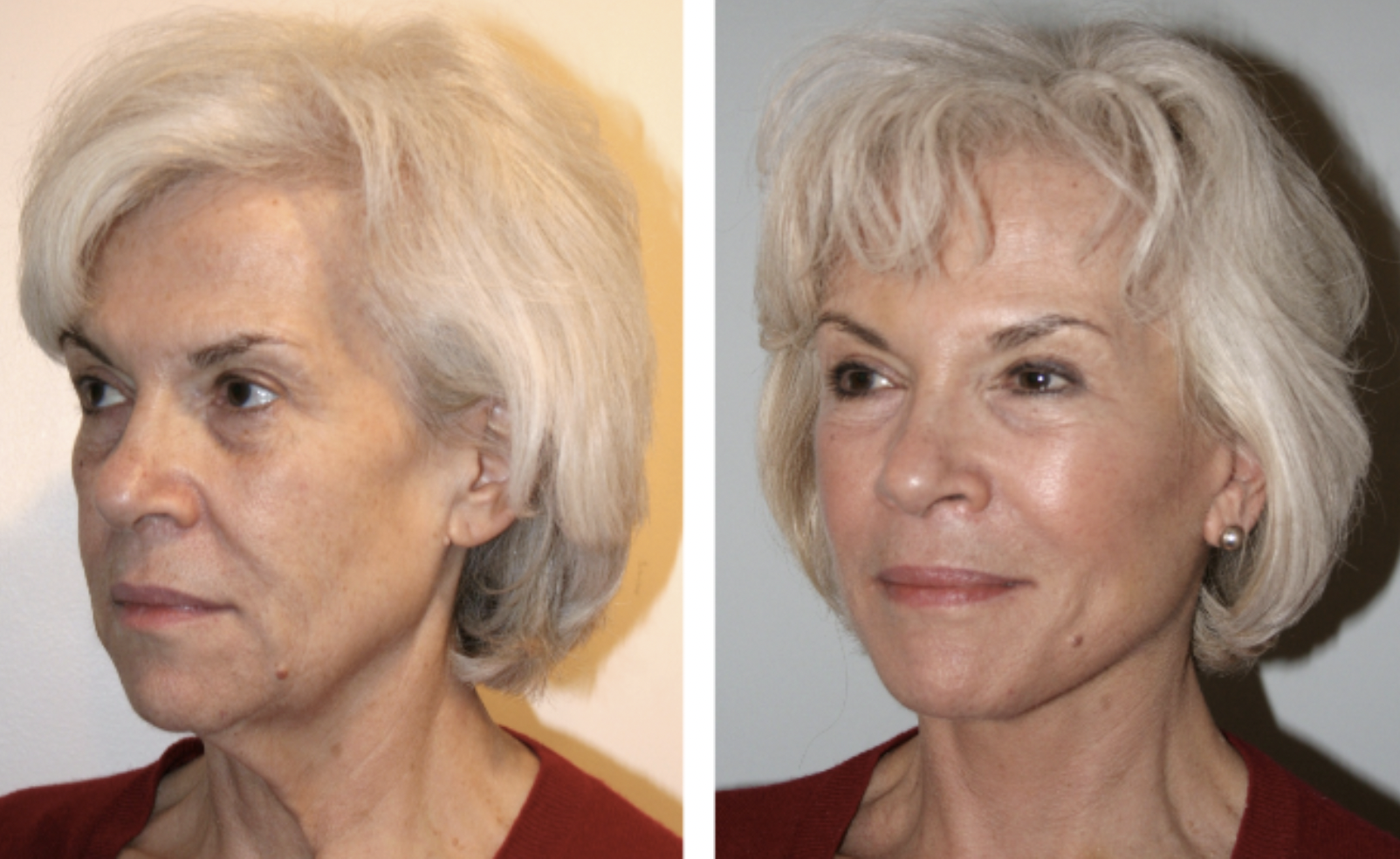
Before and after photographs of facelift patient treated by Rajiv Grover showing how lifting the SMAS enhances the cheek and face shape to give emphasis to the central facial triangle.
What was wrong with previous methods of Facial Surgery?
The previous approach to facial surgery focussed on the fact that ageing caused loose skin and therefore tightening of the face and neck was the main aim. The effects of tightening the skin alone rather than moving the underlying soft tissues lead to surgery which caused flattening of the cheek and midface. The tension in the skin distorted facial appearance as well as the earlobe which was pulled forward. The world’s first ever billionaire and richest man was John Paul Getty. A biography of him shows a youthful face in his 40’s and later in life after an “alleged” facelift we see distortion around the mouth, flattening of the cheek due to tension in the skin and a pulling of the ear to create the so called “pixie ear deformity”.
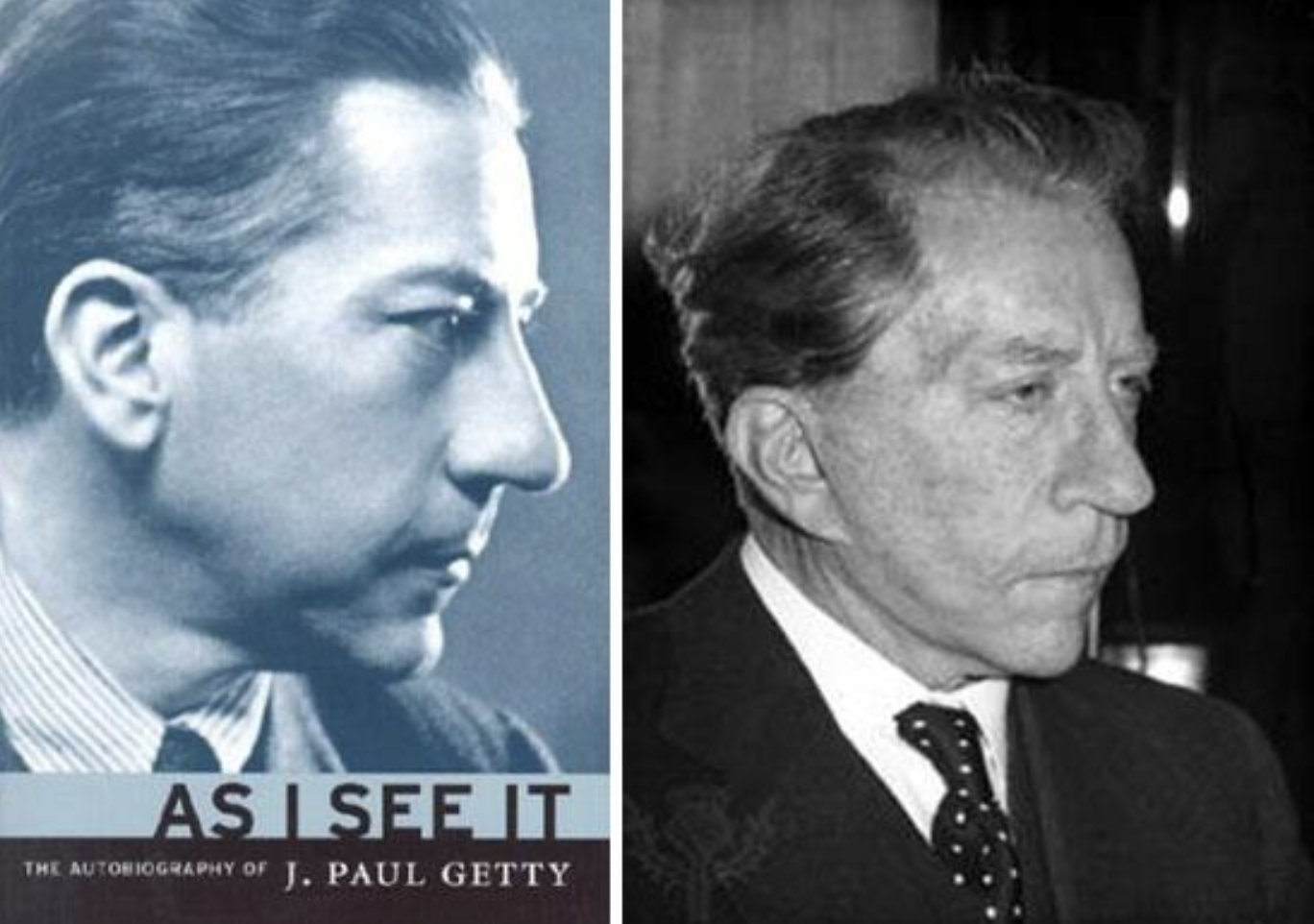
John Paul Getty in middle age and in his late 60’s after facial surgery that tightened the face by pulling only skin and paying no attention to volume. This did nothing to enhance facial shape or the central facial triangle and so did not rejuvenate in a natural way.
The Modern Approach
Facelift Surgery has transformed over the last decade and appreciation that the soft tissues need to be repositioned without tension rather than pulling the skin has led to the Deep Plane Facelift where the underlying soft tissue of the face (SMAS) is released and lifted, carrying the skin along with it (composite lift). Only after releasing the SMAS from its underlying attachments, can it move freely and without tension.
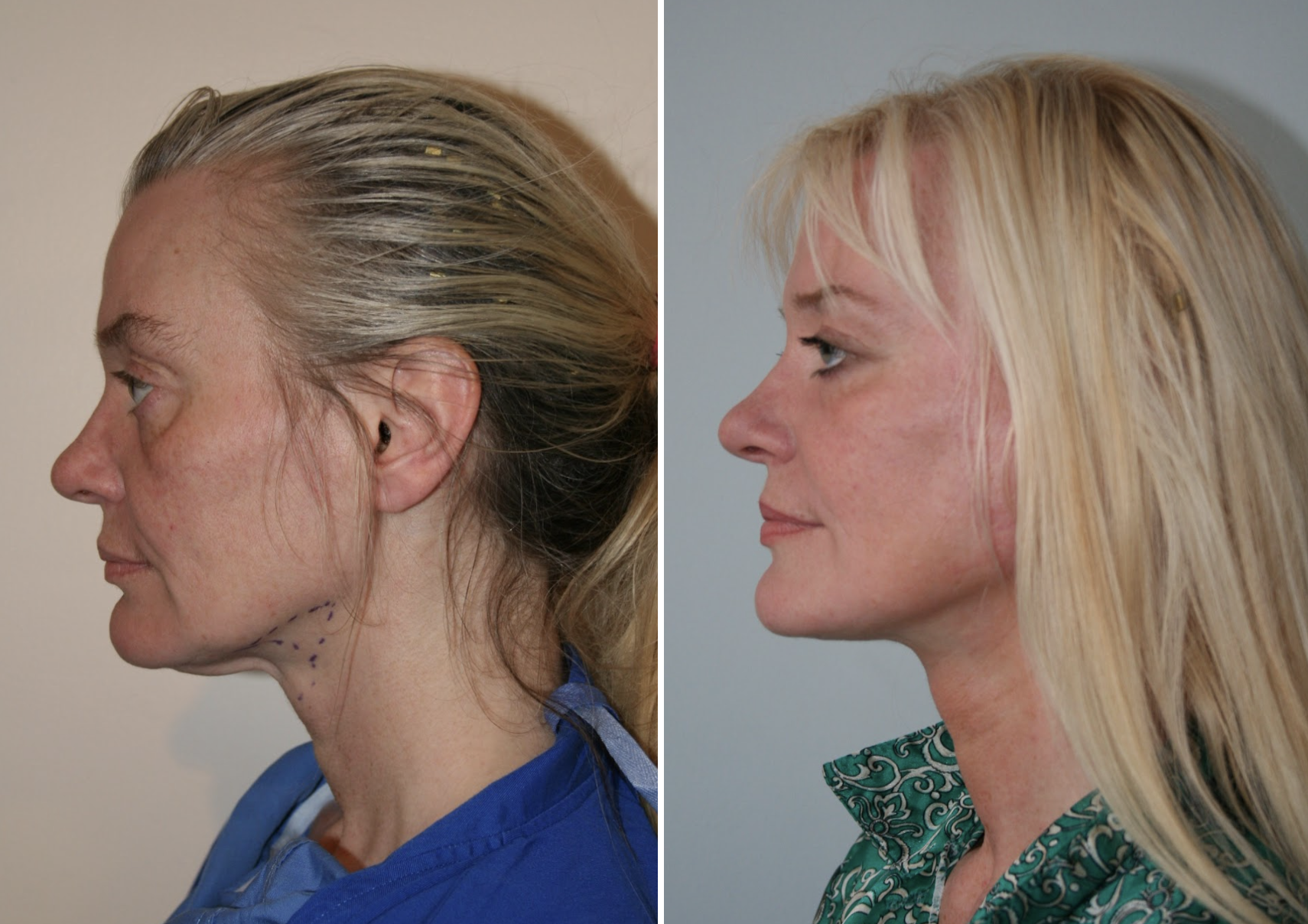
Before and after photographs of facelift patient operated by Rajiv Grover.
The appreciation that cheek volume is the key to beauty and also the key to a natural, artistic rejuvenation has only reached prominence in the last few years. Its recognition in the popular press lead to the cover of New York Magazine having a picture of Madonna emphasizing her beauty through the heart shaped face which emphasizes the central facial triangle.
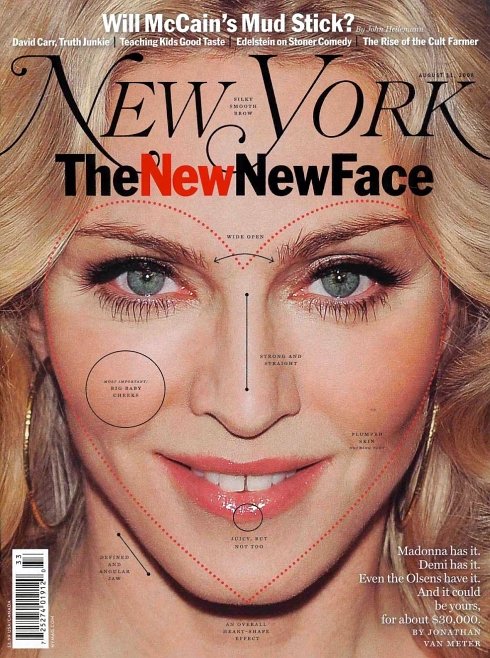
Madonna on the cover of New York magazine which had an article on how new beauty was about face shape (500 years after Leonardo da Vinci had said the same!)
Facelift Couture – Keeping your face still looking like You
Understanding that the face ages primarily by a change in shape which influences our perception of the central facial triangle is the key to natural facelifting. The Deep Plane Facelift is a powerful tool for moving the SMAS together with facial volume. Making sure the face still looks like You is equally essential. Too often when visiting New York, Miami or Los Angeles, the appearance of faces in prominent restaurants looks like people are all related to each other thanks to the cookie cutter aesthetic of their surgeons. As Lee Alexander McQueen put it, “people look the same same same”.
Rajiv has an artistic approach to facelifting that is innovative and modern, yet timeless and classic
– Lee Alexander McQueen
Having the privilege of meeting Alexander McQueen (known outside fashion as “Lee”) and discussing the dilemmas of facelifting it was clear that similarities existed in trying to personalise a facelift just as in personalising a couture garment. The answer was that both modalities need a template to customise the process. Couture clothing is stitched around a template created from the client’s body. To determine the vectors (angles) of lift during a facelift one similarly needs a template to ensure the face still looks like its owner and not the “same same same” as every other patient in a surgeon’s practice. Here the study of photographs taken about 10 years before and from the patient’s youth allows the character and shape of their face to be studied and act as a “Roadmap” to guide surgery.
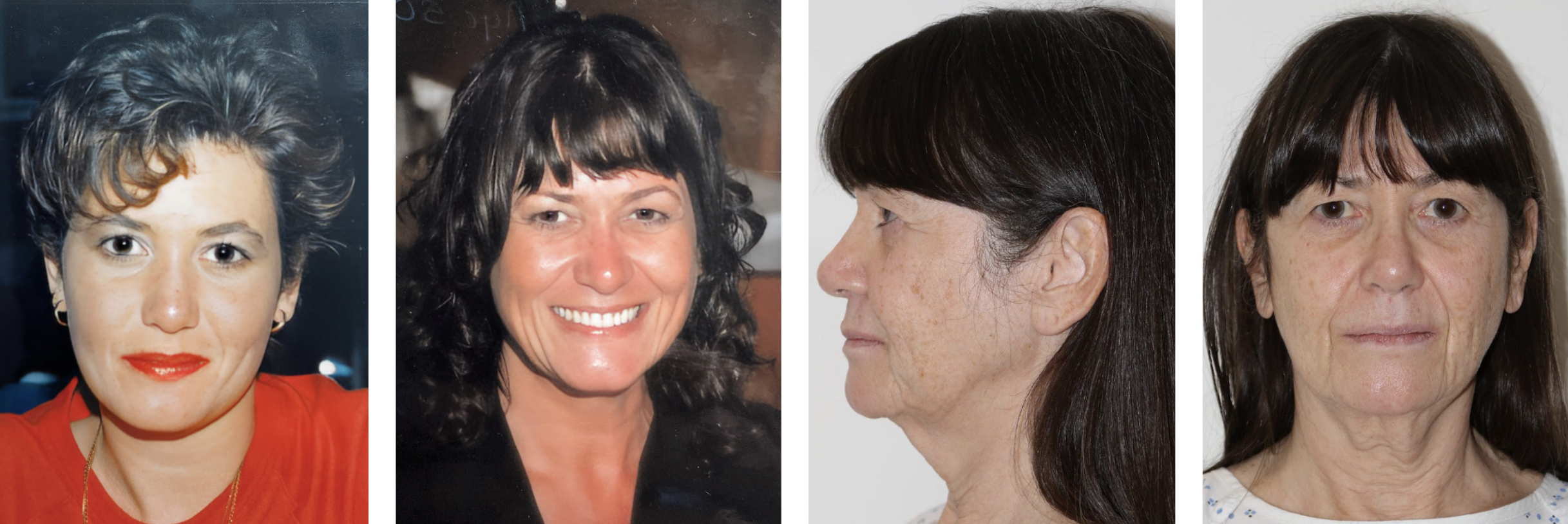
Rajiv’s patient Tracy age 26, 46 and then two images age 62 before her facelift
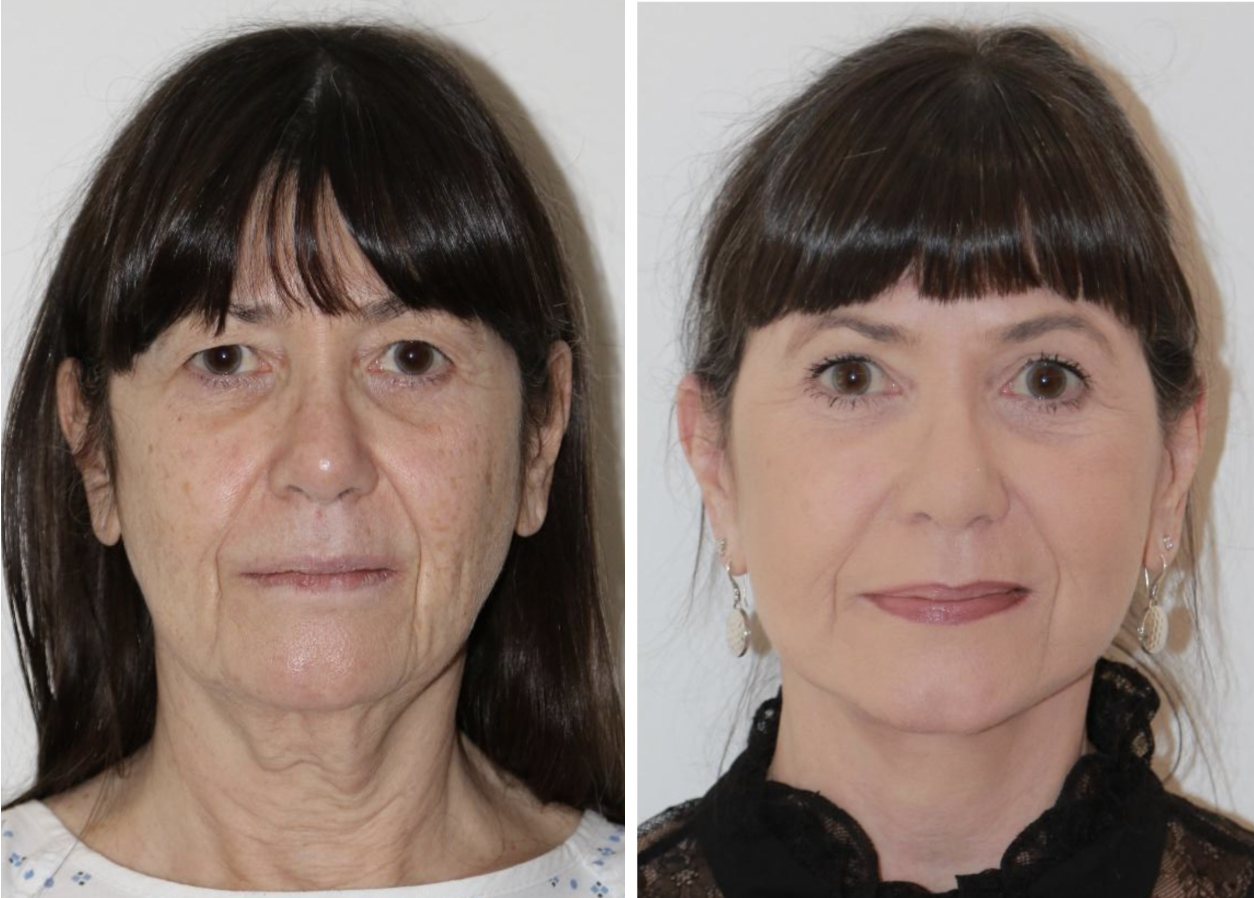
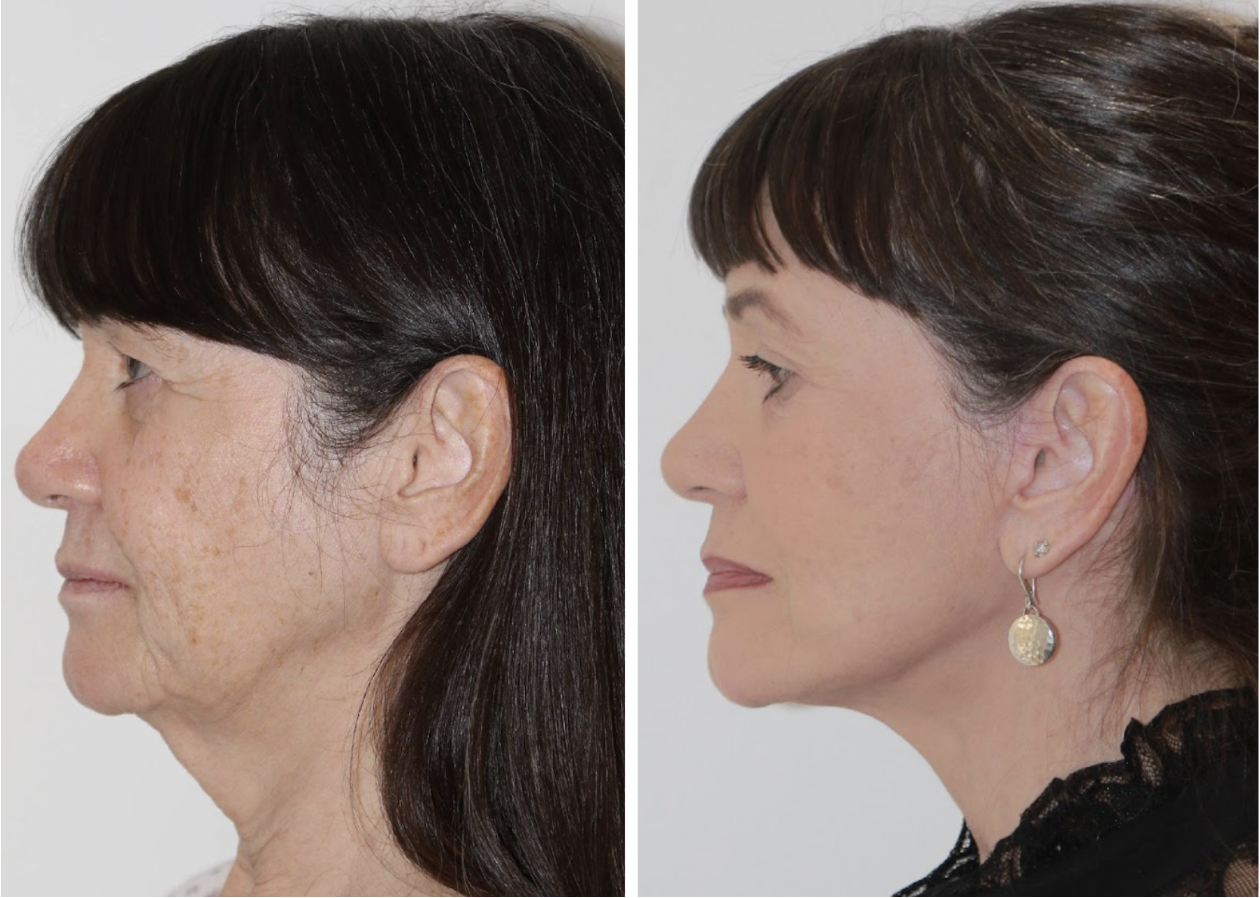
Before and after photographs of facelift patient operated by Rajiv Grover using the method of Facelift Couture guided by younger photographs.
A “bespoke” operation guided by the “roadmap” of the patient’s photographs and artistically enhancing the central facial triangle with contour, definition and silhouette describes the process of “Facelift Couture”. Before Alexander McQueen’s sad death in 2010, Rajiv and Lee collaborated on a lecture delivered at the Louvre during Paris Fashion week outlining the concept of Facelift Couture.
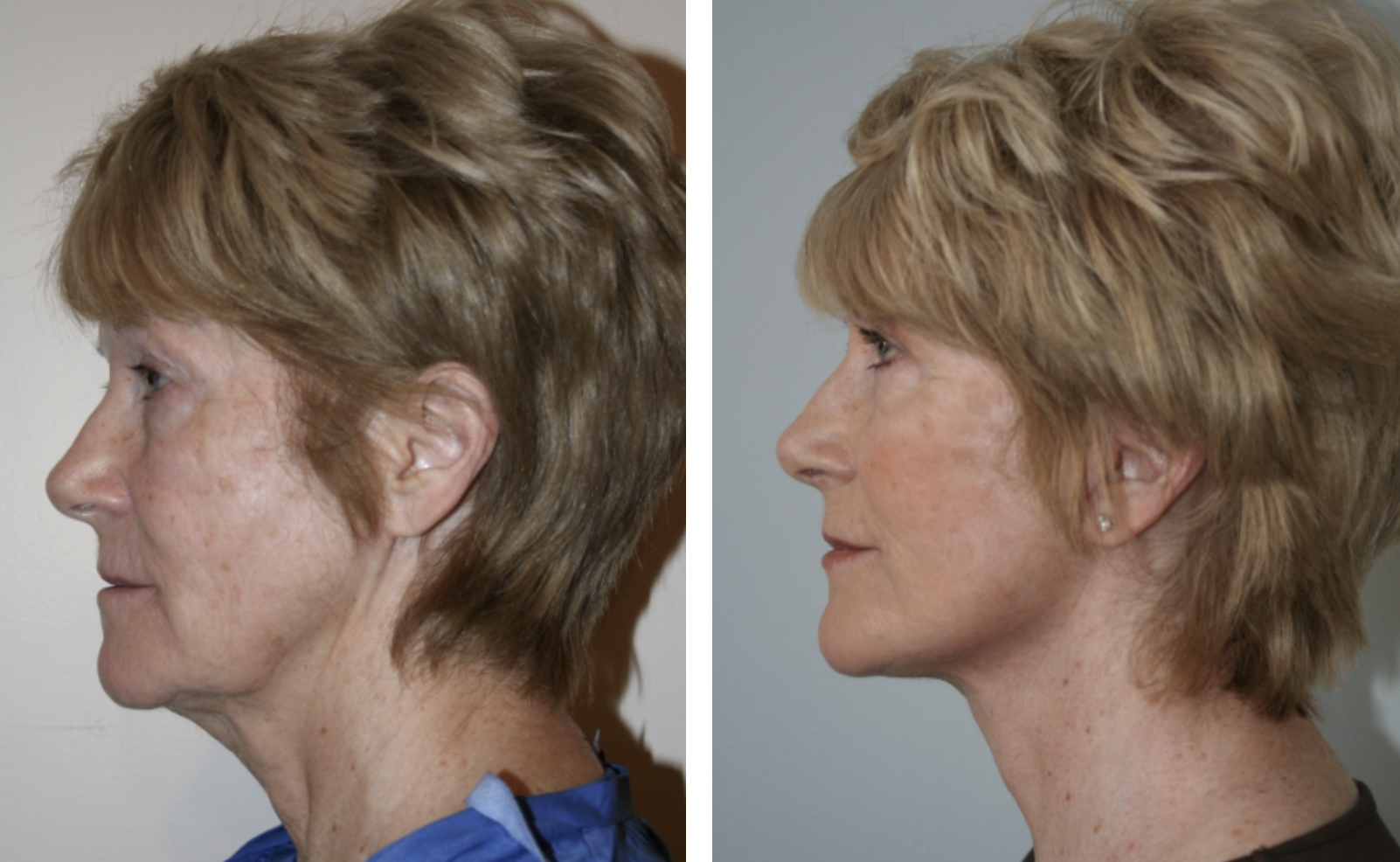
Before and after photographs of facelift patient operated by Rajiv Grover.
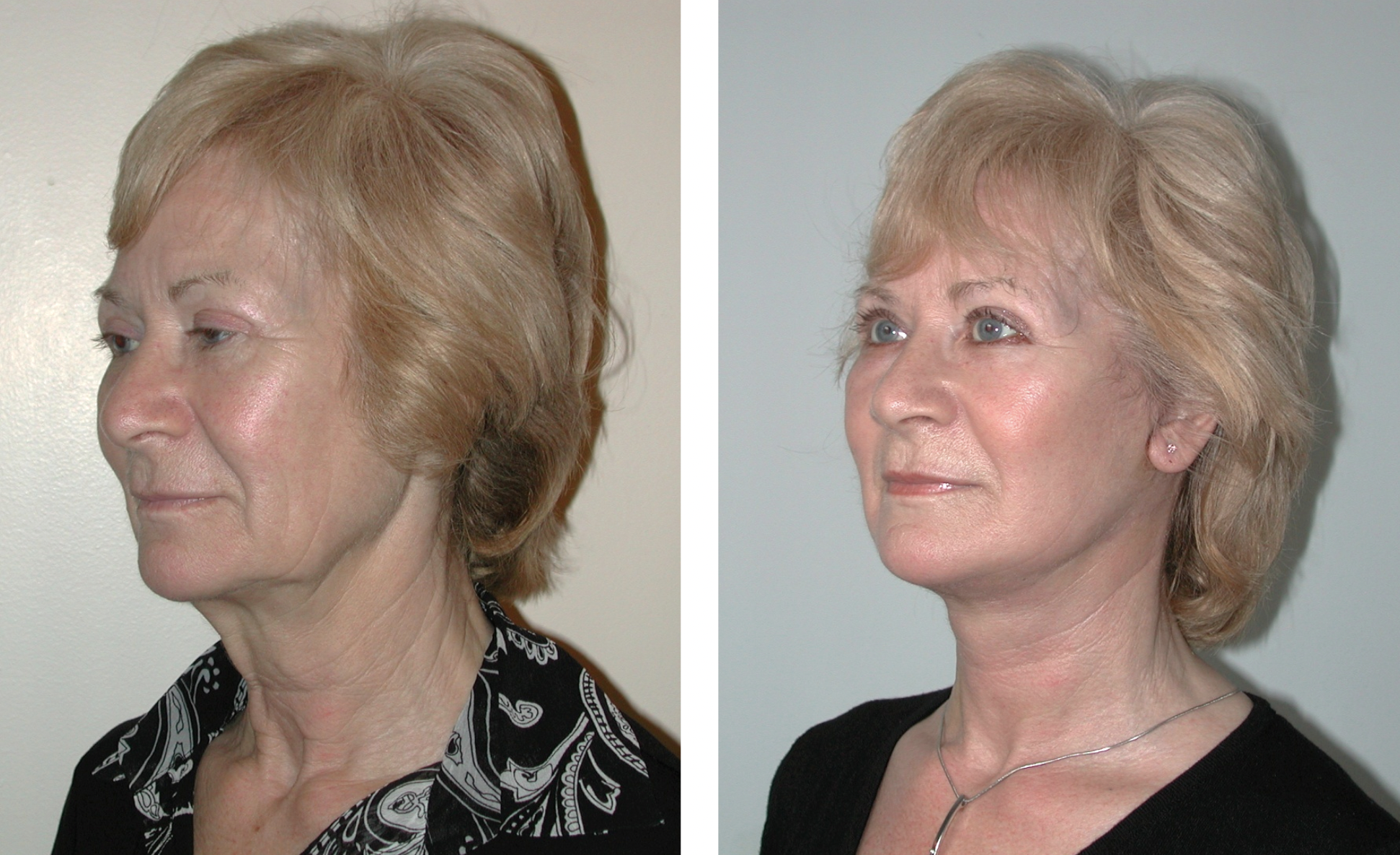
Before and after photographs of facelift patient operated by Rajiv Grover.
Conclusion
Science has helped us to understand that we are hard wired to see the central facial triangle (eyes and mouth) which our brains equate with youth and beauty. The central facial triangle is enhanced by a heart shaped face which exhibits contour, definition, and silhouette. Leonardo da Vinci described these three virtues as “The formula for the feminine eternal”. Achieving a natural looking facelift means trying to restore a heart shape which recreates contour, definition, and the silhouette of youth. The Deep Plane facelift allows facial volume to move freely, BUT to keep the patient still looking like themselves the direction of lift must be customised. Using earlier photographs as a roadmap, the direction of lift can be tailored so patients can look natural and younger BUT still like themselves. This is the concept of Facelift Couture.
It is humbling for surgeons that much of this knowledge is actually over 500 years old and was first documented by Leonardo da Vinci. What defines beauty is intuitive in the minds of many great artists who have known this for centuries, long before science began to analyse facial harmony.
